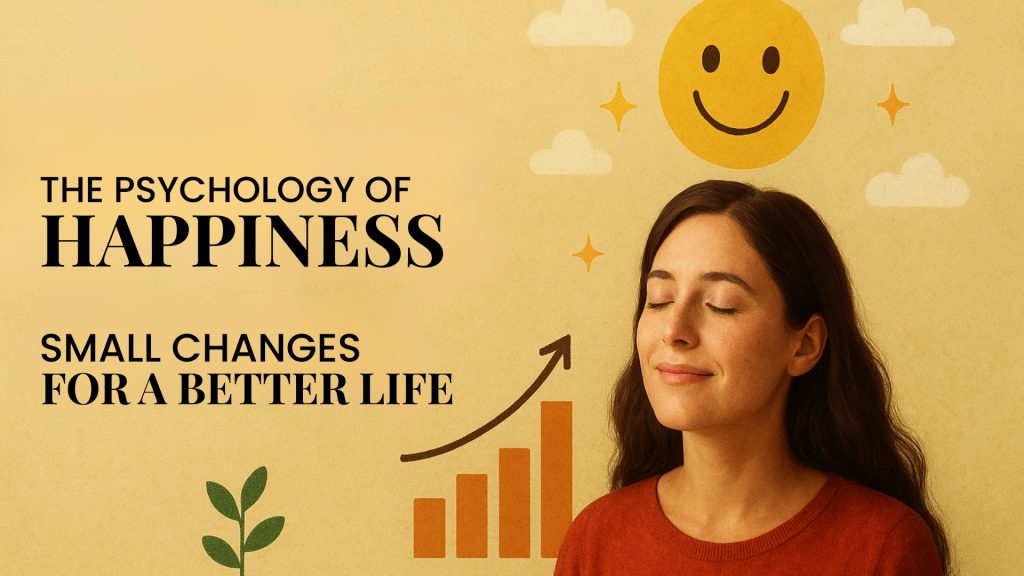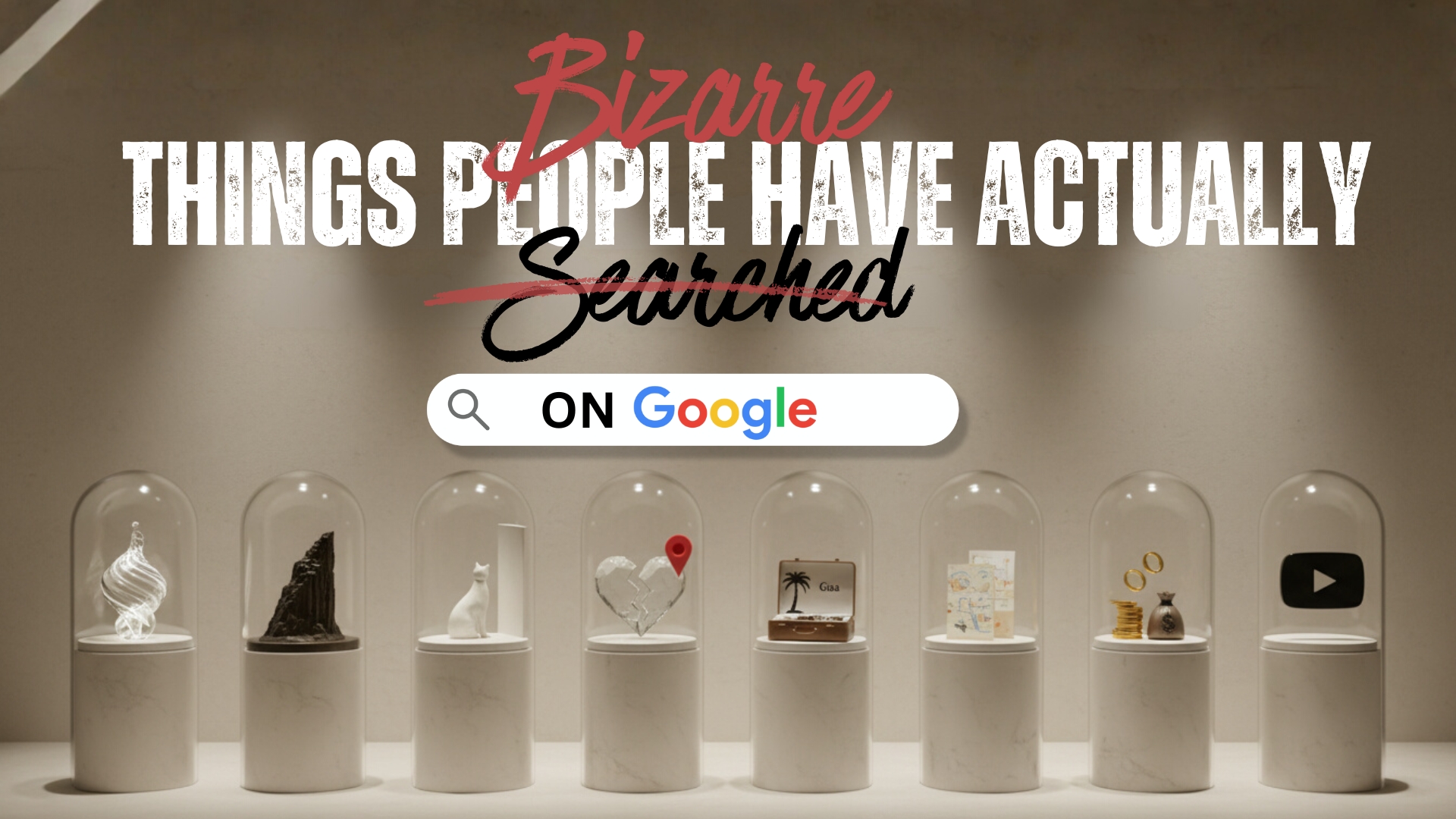True happiness frequently resides in the overlooked corners of daily life. During the pandemic, for instance, many of us discovered unexpected joy in the simplicity of sharing a meal with family or engaging in heartfelt dinner table conversations. These small, ordinary moments, free from extravagance, often provide the greatest emotional nourishment. Over time, we come to realize that we were perhaps seeking happiness in the wrong places, and attaching too much value to material possessions or achievements. It becomes clear that the most enduring happiness generally stems from what life delivers us freely, our health, relationships, peace of mind, and the ability to feel present.
It is also worth noting that emotional freedom contributes significantly to our sense of happiness. Holding onto resentment or anger only prolongs emotional unrest. When you choose to forgive, not necessarily for the sake of others, but for your own inner peace, it can be a moment of transformation. And letting go, anyway, liberates us from the psychological burden of hostility, which eventually creates room for calm and clarity.
Psychology of Happiness
From a psychological standpoint, happiness is a complex and layered subject. Here are some of the foundational ideas that help answer the question: what is the psychology behind happiness.
1. What is Happiness?

- Subjective Well-Being (SWB): As this phrase already carries the term ‘subjective’, it in itself implies that happiness arises differently for different individuals. This phrase refers to our self-perceived life satisfaction, the presence of positive emotions, and the absence of distressing ones. It’s a personal judgment of how content we feel with our lives.
- Eudaimonic Happiness: This theory is the contrasting to Hedonic happiness (seeking happiness in temporary pleasures). Eudaimonia is originated from ancient Greek, and etymologically speaking, the term divides into two halves. One is ‘eu’ meaning good or well, and ‘daimon’ refers to a guiding force. Together, it means being ‘blessed with good fortune’.
2. Prominent Theories of Happiness

- Positive Psychology: Everything about this theory is positive. It was introduced by Martin Seligman, and the approach he takes through this theory investigates the strengths and practices related to happiness, like gratitude, resilience, and optimism. It is all about feel-good stuff, uplifting practices, and strength-based elements here, and hence these practices help people and societies flourish.
- Maslow’s Hierarchy of Needs: This model suggests that happiness is most accessible when we’ve met fundamental needs (safety, connection, esteem) and move towards self-actualization, the fulfilment of one’s full potential. It is very simple, yet difficult to achieve, and which is why humans easily lean towards grief or dissatisfaction.
3. Determinants of Happiness
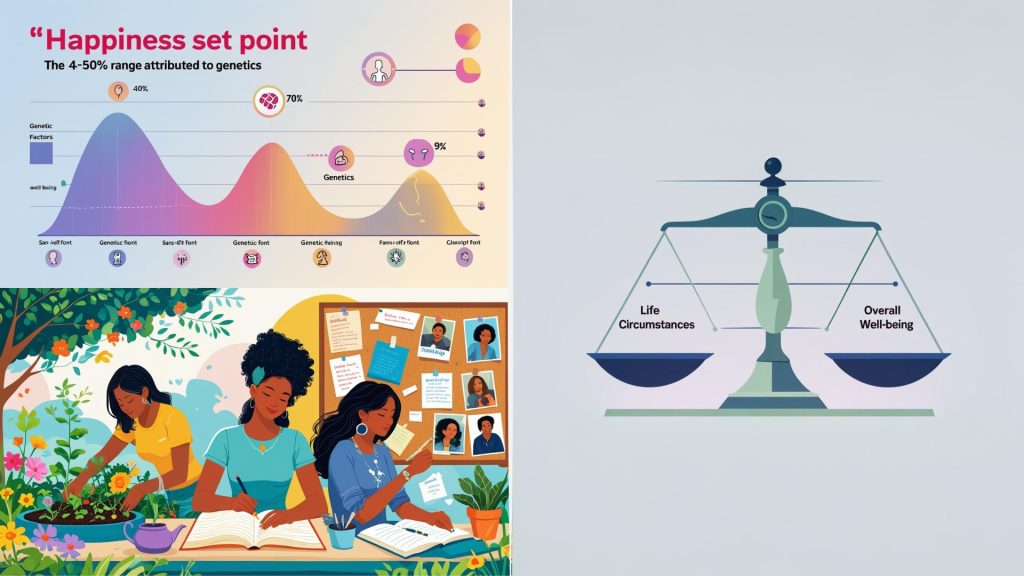
- Genetics: Studies show that genetics may account for 4–50% of a person’s baseline level of happiness. It is a concept referred to as the “happiness set point.”
- Life Circumstances: Health, income, and relationships do influence happiness, but they are likely to contribute a relatively modest portion to our overall well-being.
- Intentional Practices: Conscious efforts like nurturing relationships, cultivating gratitude, and pursuing meaningful goals can have a significant impact on happiness levels.
4. Measuring Happiness
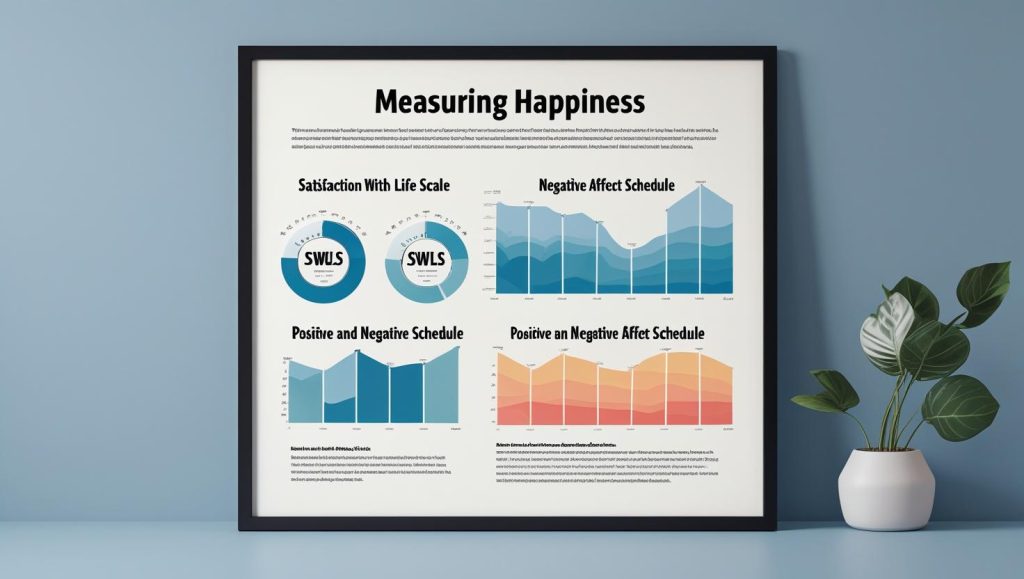
Isn’t interesting and surprising to measure your level of happiness? And there are tools to do so. Tools such as the Satisfaction with Life Scale (SWLS) and Positive and Negative Affect Schedule (PANAS) help researchers assess happiness by capturing how individuals evaluate their own emotional experiences and life satisfaction.
5. Cultural Influence
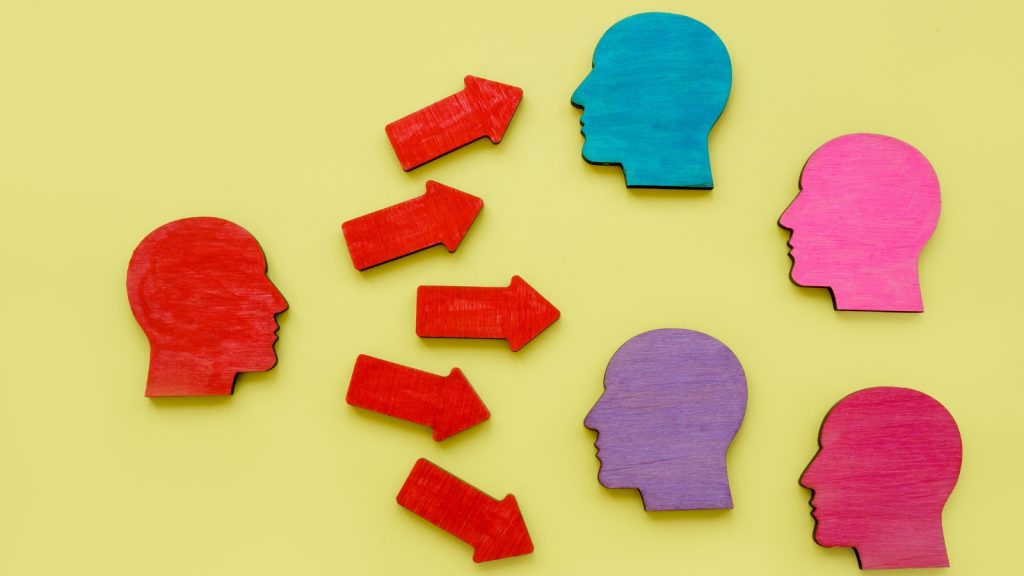
Cultural context has a strong influence on how happiness is defined and pursued. Do you know who collectivists are? Collectivists are people, or group of people, who believe that what’s best for their family, community, or team comes first. They prioritize ‘we’ over ‘I’. In collectivist cultures, harmony and relationships mostly take precedence, whereas in individualistic societies, it’s more about personal achievement and independence.
6. Applying the Knowledge
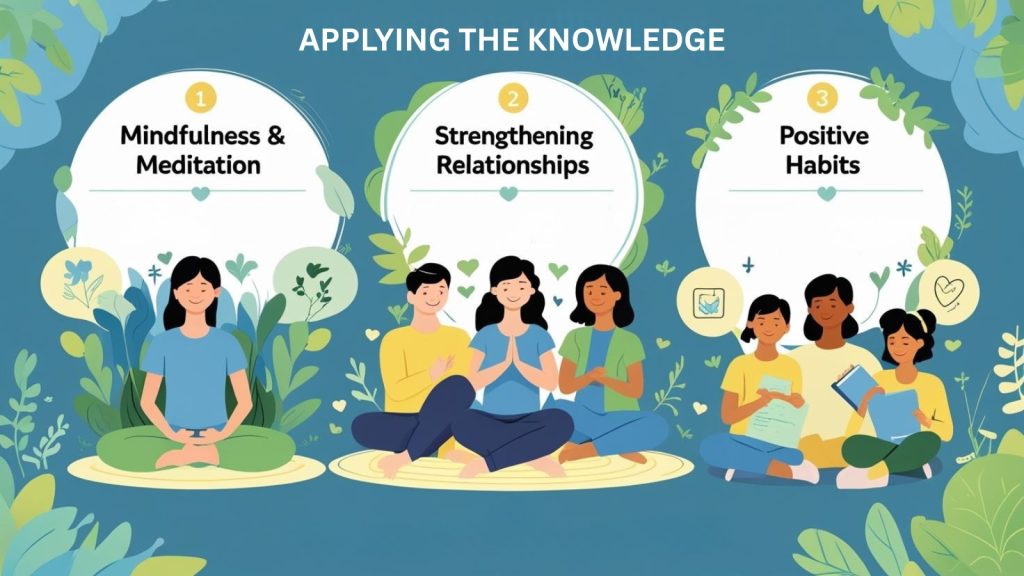
- Mindfulness & Meditation: Well, these are practices that encourage presence and emotional regulation, and ultimately offer long-term mental health benefits.
- Strengthening Relationships: Human connection is one of the strongest predictors of happiness. When you nurture these ties with sincerity, they build emotional security and joy, and promise to deliver lifelong happiness and satisfaction.
- Positive Habits: There is another easy and refreshing way to feel happy. You can experience happiness by following simple routines like regular physical activity, engaging hobbies, journaling gratitude, or spending time in nature. They with-no-pains can enhance mood and mental clarity.
What are the 3As of happiness in psychology?
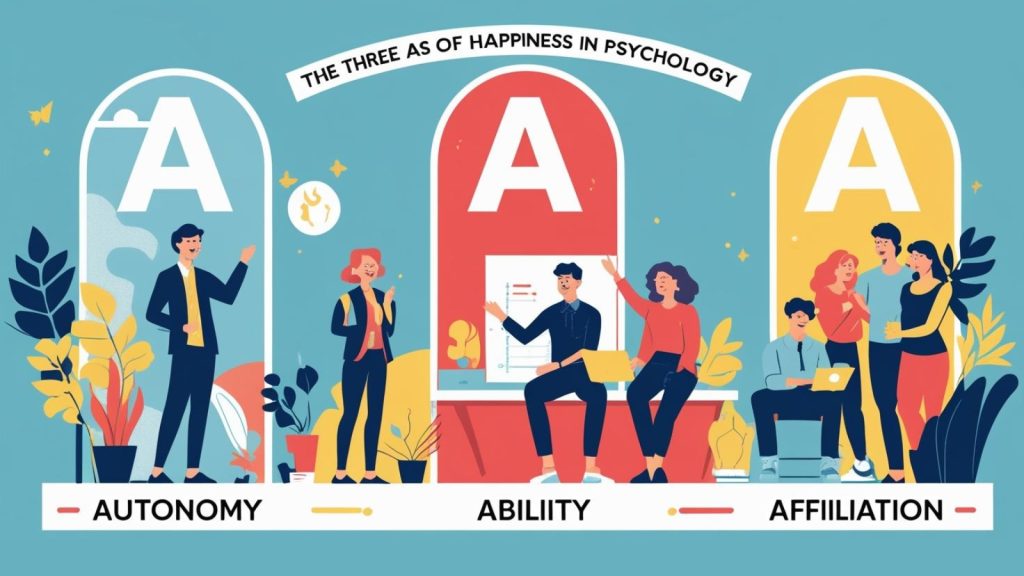
- Autonomy is when you take control over your life. And opt for things, people and situations that align with your true self.
- Ability (or Competence) has to do with feeling skilled and effective in what you do, which boosts confidence and satisfaction eventually.
- Affiliation (or Relatedness) highlights the importance of strong social bonds. Here, meaningful connections we make with others play a major role in emotional well-being.
What is the 50 40 10 rule of happiness?
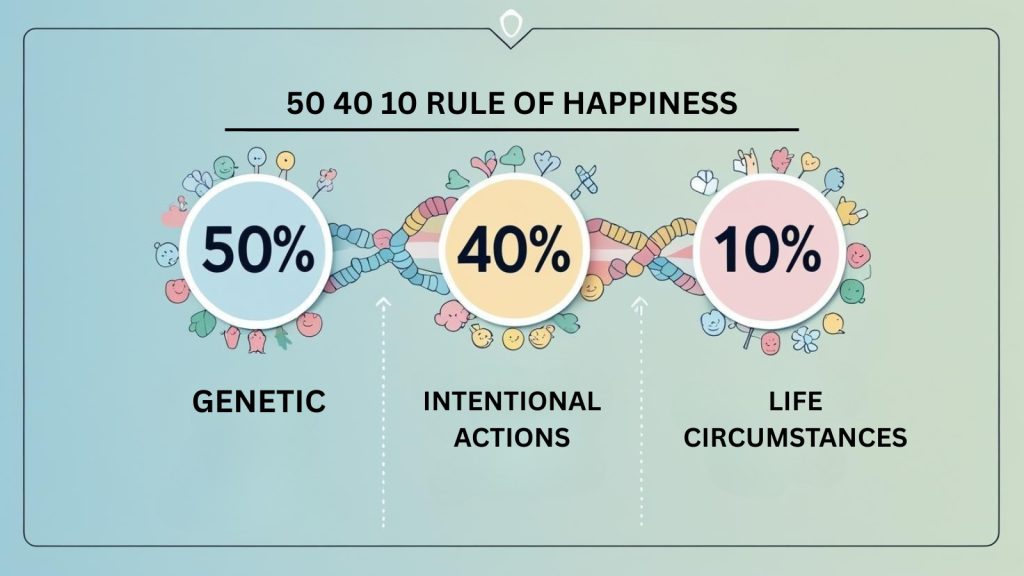
- 50% is genetic – your natural happiness set point.
- 10% comes from life circumstances – like income, status, or where you live.
- 40% depends on intentional actions – habits, mindset, and choices you make daily.
While we can’t change our genes or fully control our life situation, the 40% that’s in our hands holds the power to boost lasting happiness. We can definitely work on them to ultimately on upgrade our level happiness. Practicing gratitude, building relationships, and choosing positivity are all part of that. In short, your habits and mindset matter more than you think, nearly half of your happiness is up to you.
A Closing Thought
Life isn’t something that happens to you, you must meet it halfway with awareness and intention. Begin each day with a quiet recommitment to your values. A heartfelt message can go a long way in keeping bonds strong. Cherish and nurture your partner, even after commitment. Let go of narratives that no longer serve you. Push yourself to choose peace over past pain, that strengthens your emotional quotient. Surround yourself with joy, authenticity, and acceptance. Distance yourself from what clouds your clarity. Accept people, but place them where they align with your well-being. Face uncertainties with resolve. Never underestimate the power of good communication.

